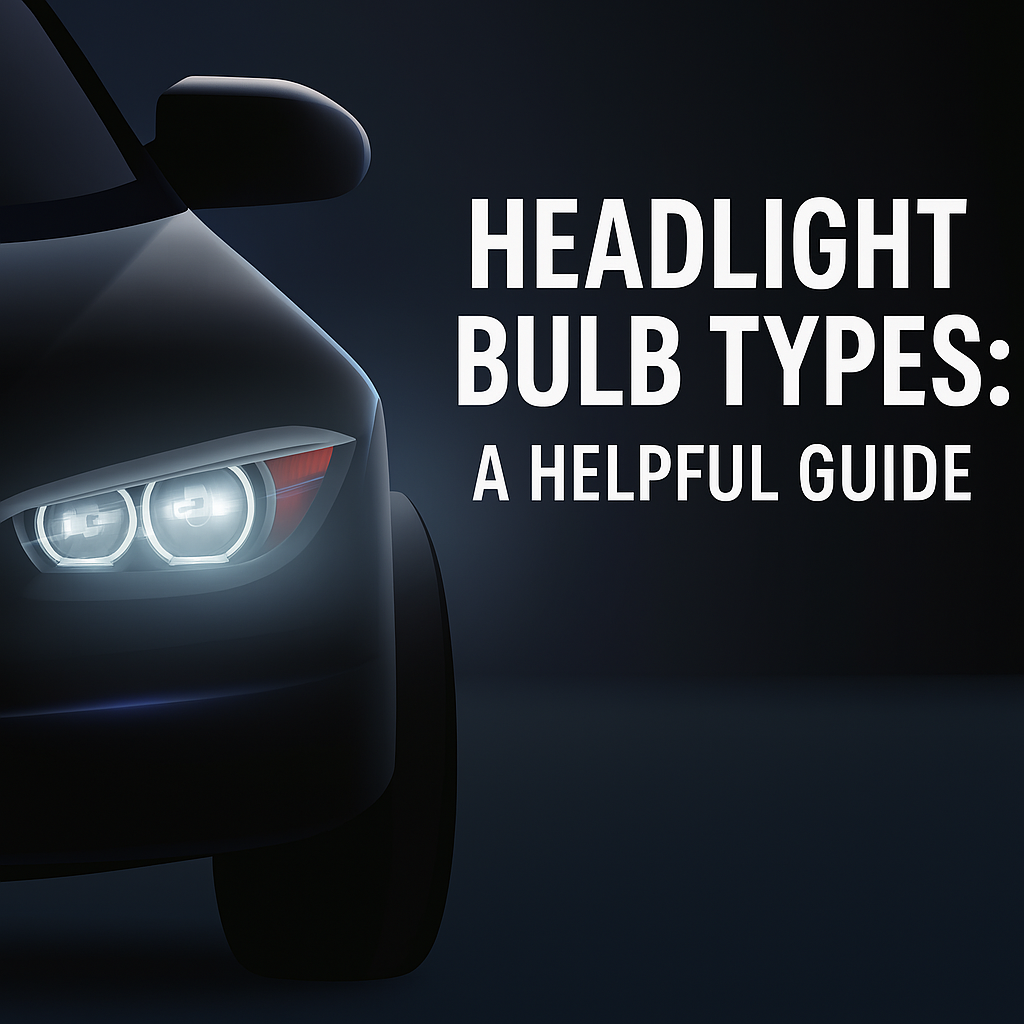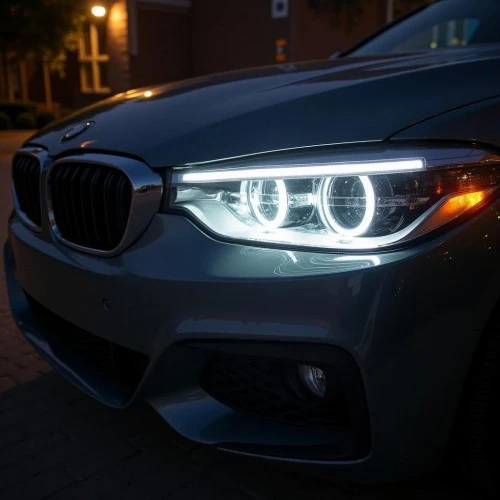Why are LED car headlights the future trend?
Upload Time:
Mar 30, 2025
Why are LED car headlights the future trend?
The prevalence of LED headlights in automobiles today can be attributed to a multitude of factors that encompass technological advancements, environmental concerns, safety enhancements, and consumer preferences. This trend underscores a shift towards more efficient, sustainable, and intelligent automotive lighting solutions.
Energy Efficiency and Environmental Sustainability
One of the primary reasons for the popularity of LED headlights is their exceptional energy efficiency. LEDs (Light-Emitting Diodes) convert electrical energy into light more efficiently than traditional halogen and xenon bulbs, with energy consumption being as low as one-tenth that of halogen bulbs and one-seventh that of xenon bulbs. This translates into reduced fuel consumption and lower carbon emissions, aligning with the global push towards environmental sustainability and reducing the carbon footprint of the automotive industry. The high electrical-to-optical conversion rate of LEDs, often exceeding 80%, ensures that minimal energy is wasted as heat, further enhancing their eco-friendly credentials.
Long Lifespan and Durability
LEDs are renowned for their long lifespan, often exceeding 50,000 hours of operation compared to just a few thousand hours for halogen bulbs. This durability translates into reduced maintenance costs and fewer replacements over the vehicle's lifetime. The absence of fragile filaments or gas-filled tubes in LEDs also makes them more resilient to vibrations and shocks, ensuring reliable performance even in harsh driving conditions.
Enhanced Lighting Performance
LED headlights offer superior lighting performance in terms of brightness, color accuracy, and beam control. The monochromatic nature of LEDs enables them to produce light with high color saturation and vivid hues, making night driving safer and more comfortable. Furthermore, LEDs can be designed with precision optics to shape and direct the light beam, minimizing glare and maximizing visibility for both drivers and pedestrians. This includes features like Adaptive Frontlighting Systems (AFS) that adjust the headlight beam pattern based on steering angle and vehicle speed, providing optimal illumination in different driving scenarios.
Design Flexibility and Aesthetics
LEDs' small size and lightweight nature allow for greater design freedom, enabling automakers to create sleeker, more aerodynamic headlight designs. The ability to integrate multiple LEDs into a compact unit also facilitates the implementation of advanced lighting features such as matrix headlights, which use a grid of individually controlled LEDs to dynamically adjust the light distribution. These advanced systems can provide features like automatic high-beam dimming, cornering lights, and even projected graphics on the road surface, enhancing both safety and the overall driving experience.
Technological Advancements and Intelligent Lighting
As automotive technology evolves, so do the capabilities of LED headlights. Intelligent lighting systems, powered by advanced sensors and algorithms, are becoming increasingly common. These systems can detect other road users, adjust light intensity and distribution to avoid glare, and even communicate with other vehicles or infrastructure via light signals. For instance, pixelated LED headlights can project symbols or messages onto the road to warn pedestrians or other drivers of potential hazards.
Consumer Demand and Market Trends
Lastly, the growing popularity of LED headlights is fueled by consumer demand for safer, more efficient, and technologically advanced vehicles. As awareness of the benefits of LED lighting increases, consumers are increasingly willing to pay a premium for vehicles equipped with these features. Automakers, in turn, are responding by offering LED headlights as standard or optional equipment on an ever-widening range of models.
In conclusion, the prevalence of LED headlights in automobiles today is a testament to their many advantages, including energy efficiency, long lifespan, enhanced lighting performance, design flexibility, and technological advancements. As the automotive industry continues to evolve, LED headlights are poised to play an even more prominent role in shaping the future of automotive lighting.
Automotive manufacturers are highly focused on developing new and innovative lighting to increase the driver's and other road users' aesthetic appeal and safety. Automotive lighting is an integral part of every vehicle and significantly ensures safety, aesthetic appeal, and visibility. OEMs in lighting innovation create a range of concepts for interior and exterior use of LED technology. Almost all OEMs have incorporated LED technology in today’s vehicles. LED daytime running and rear lights have been introduced on several vehicles, and the latest LED matrix headlights provide vastly superior characteristics for functionality and design. Recently, all the high-end four-wheelers have been typically equipped with LED lighting, which is also anticipated to fuel the overall market growth.
“Exterior Lighting will remain the dominant application during the forecast period.”
The exterior lighting application is projected to lead the automotive lighting market during the review period. The segment's growth is mainly attributed to the compulsory fitment of several lighting components such as headlights, tail lamps, indicators, Center High Mounted Stop Lamps (CHMSL), Brake/ reverse lights, and license plates in almost all categories of vehicles. Further, continuous advancements in front & rear lighting technologies and government mandates to install daytime running lights (DRL), and adaptive lighting will prompt the growth of this segment. The exterior adaptive lighting technologies are gaining traction during the forecast period. This lighting improves the visibility of vehicles at a dimly lit intersection with the help of sensors which help to detect the steering angle to swivel based on the travelling direction of the vehicle. For instance, the European Union mandated the installation of passenger and commercial vehicles. Additionally, passenger cars produced in Japan and Canada also need to be fitted with DRLs, and other countries such as the US, China, India, and South Korea have noticed a significant uptake of LED DRLs and fog lights starting from mid- to premium range cars. Hence, advanced technologies like automatic ON/OFF, high beam assist in front lighting, and rear light signaling functions help to communicate with the driver and surroundings while driving. Thus, such advancement in exterior lighting is transforming the overall automotive lighting market which will drive this market in upcoming years.
“LED to be the fastest growing automotive lighting technology by 2030.”
The LED lighting market will become a prominent technology in the automotive industry by the end of 2030 as it is more efficient than other technologies and is useful for adaptive lighting features. Due to this, LED headlamps and taillights have experienced an upsurge in demand in the passenger vehicles segment. On the other hand, mid-priced cars are getting installed with hybrid lighting, which combines halogen and LED lighting. Moreover, certain government norms encourage the usage of LED lighting. For instance, in February 2022, the US Department of Transportation’s National Highway Traffic Safety Administration (NHTSA) issued a final rule allowing automotive OEMs to install adaptive driving beam headlights on newly produced vehicles.
Further, advancements in LED technologies such as OLED and matrix LED are prominently available in high-end cars for headlight application; however, they are expected to see a noticeable adoption in mid-range cars, especially in developing countries. Other than exterior applications, the adoption of LEDs for dashboards, gloveboxes, and dome lamps is growing rapidly. Leading OEMs such as Hyundai, Toyota, Volkswagen, BMW, and Nissan among others have adopted LED technology in interior and exterior applications to improve the vehicle's appearance. Some major commercial vehicle manufacturers, such as Daimler, Volvo, Scania, and MAN Trucks among others, are offering LED headlamps in some of the heavy trucks segment. Thus, the extended lighting range of LED technology with design flexibility and shifting consumer inclination towards LED technology will propel the adoption of LED technology in the coming years.
“Europe is the second largest market for automotive lighting.”
Europe is estimated to remain the second largest region for the automotive lighting market. The region's growth is mainly driven by stringent government regulations and the presence of prominent OEMs and tier-1 suppliers that invest in advanced technology to improve vehicle and passenger safety. For instance, the use of Daytime Running Lights (DRLs) has been mandated by European authorities for almost all vehicle types. These regulations by the European Union have compelled automotive OEMs to incorporate advanced lighting systems. The European Union has set a target to reduce road fatalities by 50% by 2030, and advanced automotive lighting solutions are seen as a critical technology in achieving this goal.
Regarding country-wise analysis, Germany is estimated to account for the largest share of the European automotive lighting market. Class C and above passenger vehicles contribute around 90% of the total passenger cars produced in Germany. The demand for trending LED technology in headlights, taillight, and in-cabin lighting is higher in premium sedans, coupe, and mid & full-size SUVs. Other major EU countries, including Spain, France, and the UK, have a higher adoption of luxury cars. LED technology has higher adoption in these vehicles due to advancements specific to this technology, like matrix LED, OLED, and adaptive headlights that adjust the light beam based on driving conditions, enhancing visibility without causing glare for oncoming traffic. The technology provides flexibility to create many new design possibilities, enabling functional and aesthetical adjustments in numerous ways. Due to this, Tier-1 suppliers such as OSRAM, Magnetic Marelli, and Hella offer this technology to automakers like AUDI, BMW, and Mercedes-Benz as a standard feature.
Similarly, the development and adoption of smart automotive lighting systems under ADAS technology, like headlamps responding to the steering angle, suspension movements, road curvatures, and forward traffic, is increasing in the region. This will drive the demand for the adaptive headlamp market. These features are gaining popularity in Mercedes-Benz, Audi, Volvo, Volkswagen, and other passenger car models. European legislation focuses on decreasing fatalities by encouraging the inclusion of these safety systems in vehicles. Further LCVs offered by OEMs such as Mercedes-Benz and Volkswagen incorporate advanced lighting systems, including LED headlights for improved visibility and energy efficiency. These factors will fuel the region's demand for advanced automotive lighting market.
Key Players
The Automotive Lighting Market is dominated by globally established players, such as Koito Manufacturing (Japan), Magnetic Marelli (Italy), Valeo (France), HELLA GmbH & Co. KGaA (Germany) and Stanley Electric (Japan).
Relevant News








